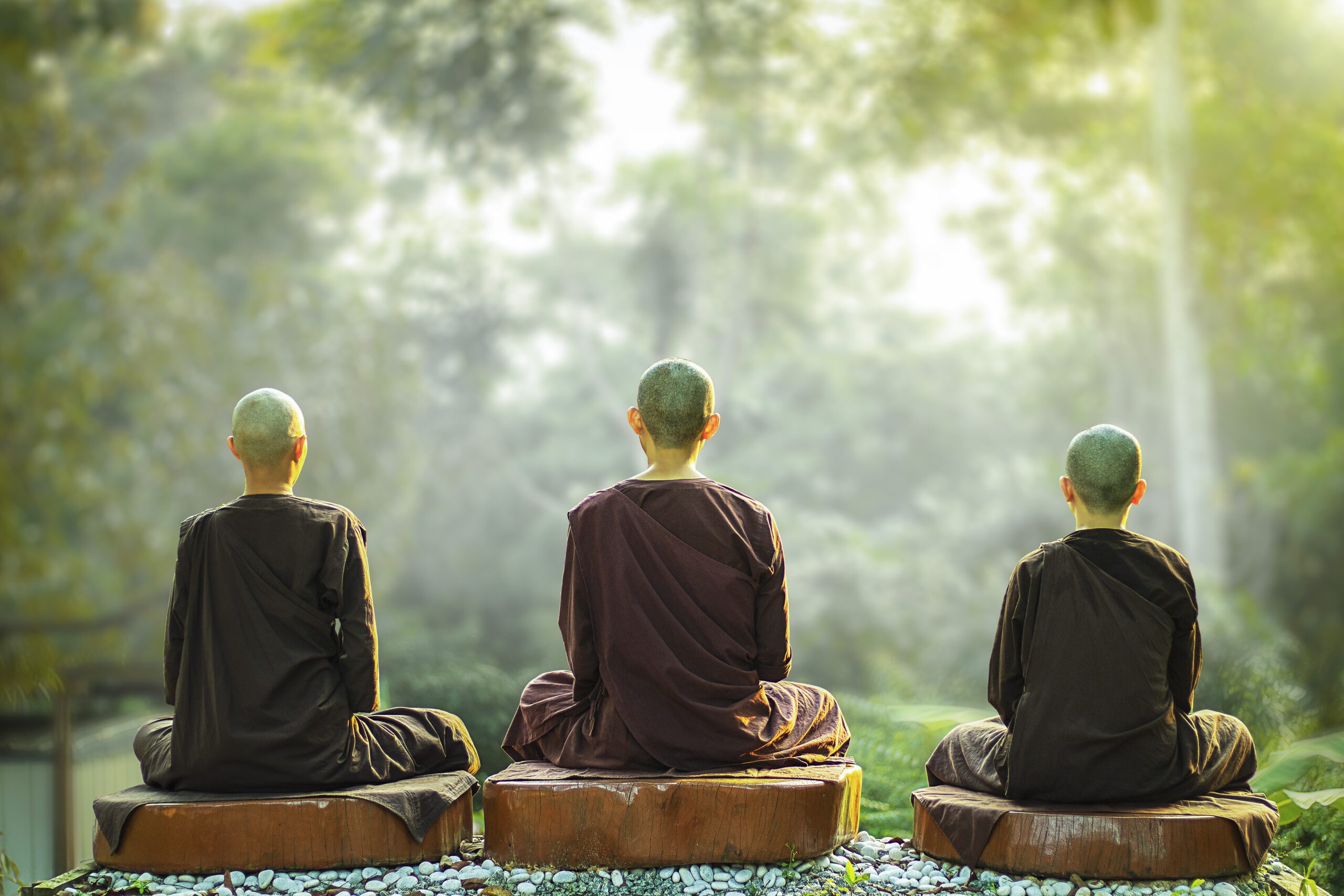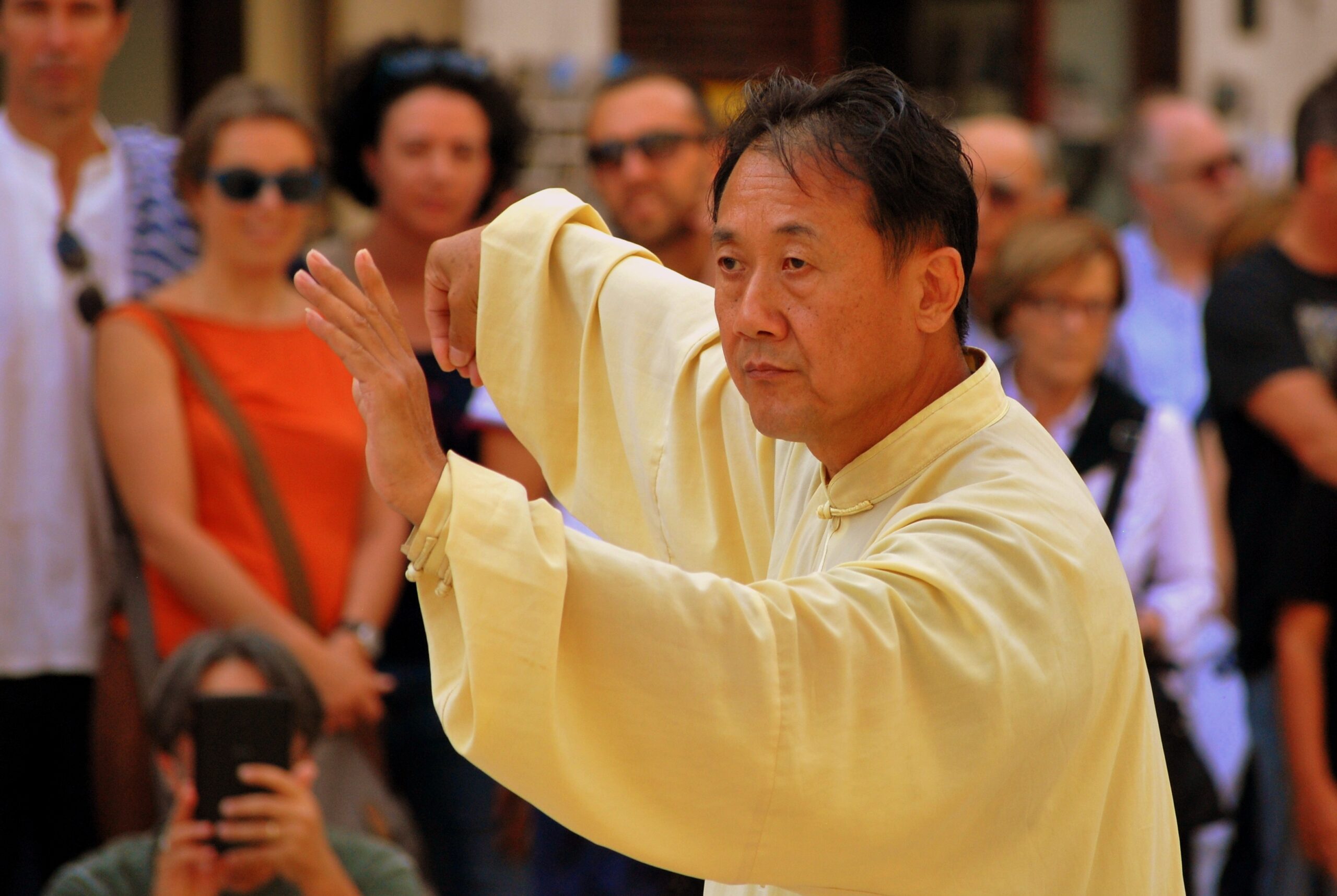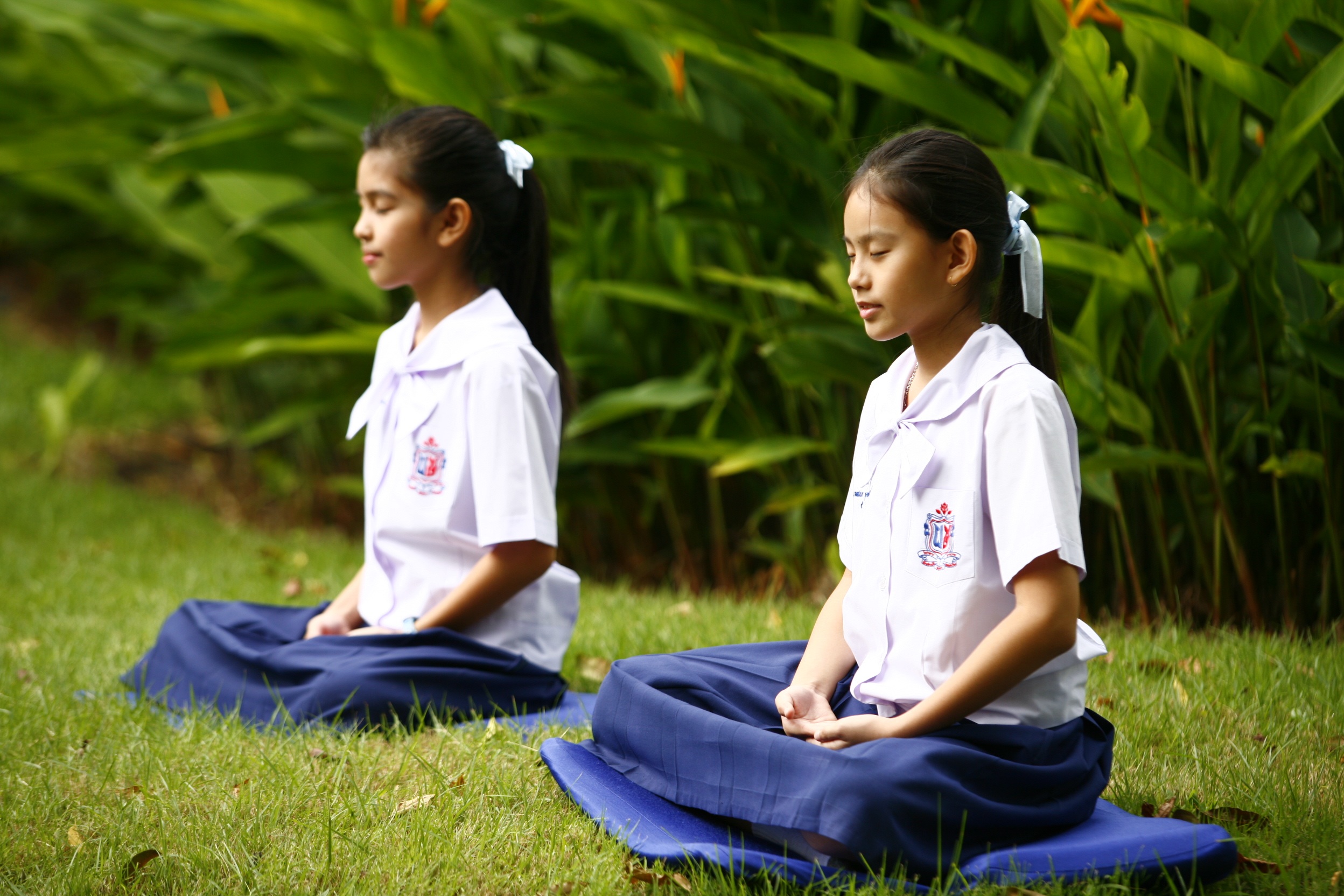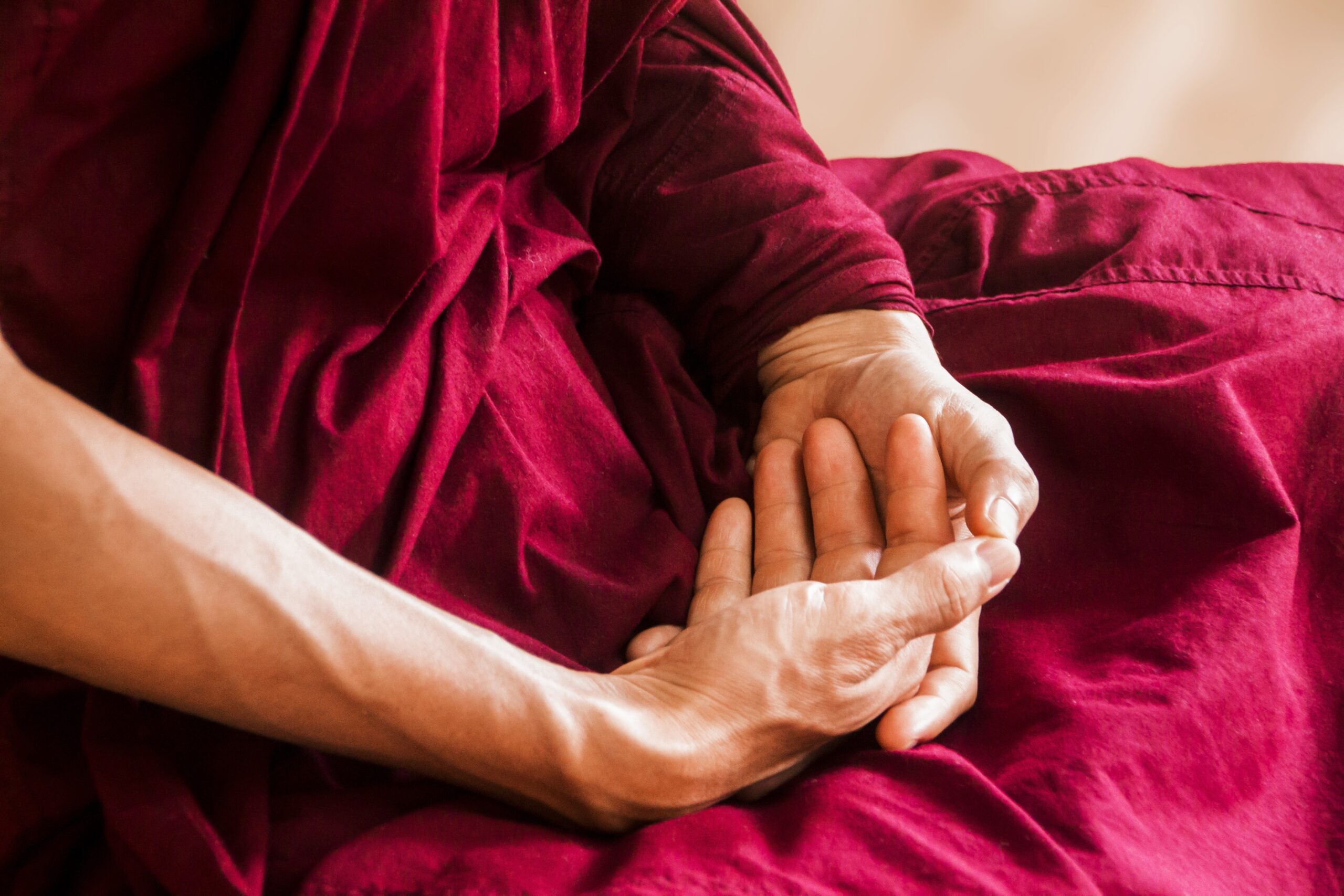Chi & Its Many Facets
The elusive concept of chi is further complicated by the many types cultivated in qigong, reflected in Asian culture, and defined in our view of the cosmos.
There is no real word for it in English; its very nature and existence is foreign to most of Western thinking. On the other hand, the concept of an intrinsic life force permeates the very fabric of Chinese culture.
When we build relationships within the family, between couples or friends, or in business, we say there is good life energy flowing between father and son, business partners, or friends and lovers.
Likewise, when there is hostility, we say there is bad energy flowing.
This life energy affects even our emotions. We say anger is due to too much “fire” in our liver. And when there is hostility, there exists what in English is called “frigid air”.
We say the quality of a work of art depends on the life force put into it: It’s what brings a painting to life or what animates a piece of music.
The traditional Chinese “mountain-and-water” painting, or a nature scene of birds, tigers, pandas, lotus lilies or other flower blossoms typically must have this Breath of Life in it to give it the right balance of “emptiness” and “fullness.”
And the strength of Asian calligraphy is reflected by the intrinsic energy invested in the hand that writes it. Calligraphy, we say, is a form of meditation, just as tai chi is a form of donggong or moving meditation.
In qigong, the practitioner literally breathes life into his or her movements. In calligraphy, the right balance flows from the artist’s hand into the brush or pen, and then onto the page itself.
Just as Westerners view music composers and literary writers as being in the “creative zone,” we say these artists are in meditation, and the intrinsic life energy can be clearly seen in the strength and vitality of the resulting product.
Foods also contain “hot” and “cold” essences, and “wet” and “dry”. We view fried foods, such a french fries, potato chips, and spring rolls, or oven-baked foods, such as freshly baked bread or pizza, to be shang huo — literally, as “fire-rising,” and foods such as salads, beer, green tea, and most types of fruit as “cooling.”
For a balanced diet, we try to consume foods that are more neutral and do not veer to the extreme. We add ginger or black pepper to “cooling” vegetables to balance the energy. We avoid water-laden melon or squash in winter and spring — seasons known to be predominant in “wetness”.
We observe the energy balance of our foods and even in the nature of individual herbs, because, when consumed, they can also affect the balance in our bodies. Chinese medicine views the human body as a network of chi flowing through the anatomic vessel, giving it life.
Chi courses through our body through channels called jingluo or meridians. When these pathways are blocked by imbalanced life energy, they produce toxic backup, because waste products cannot be efficiently eliminated through sweat glands and the pores of our skin, or through our urine and bowel movements. This results in pain and malaise.
We can remove bad or blocked energies through massage. We can also stimulate certain acupressure or acupuncture points to balance the life energy again.
Qigong can sensitize our awareness of this finely-tuned balance. Qigong is a form of biofeedback: By using the mind power yinian to purposefully circulate our life force, we can sense exactly where a blockage is occurring and remove it.
Our energy changes throughout the day. More yang energy is generated during the day and yin during the evening. Thus, beverages and foods that are essentially “cooling” by nature, are best consumed in the morning or afternoons.
When we keep late nights, our yang energy rises and produces high blood pressure and other energy imbalances. Chinese medicine and qigong encourage us to retire before eleven at night and to be more active during the day.
Another concept foreign to Western culture is the Asian practice of feng shui (i.e. “Wind and Water”) geomancy, based on the belief that nature is permeated with the living Breath. When the life force of a building, area or locale is off kilter, it can effect malaise, mood swings, even ill fortune within that locality or milieu.
We view the human anatomy as the microcosm of the macrocosm: Inasmuch as the intrinsic life force animates our bodies, it also gives life to Nature and all its living creatures. Every tree, plant, stone and even the Earth itself, contains the living Breath.
And just like our bodies, there can be good and bad energies, yin and yang, hot and cold, free-flowing and blocked energies. Feng shui manipulates the energies in our environment just as acupressure, Chinese massage, moxibustion, cupping, herbology, qigong, meditation, reflexology, and acupuncture are used to manipulate the Breath in our bodies.
Chinese culture — indeed, our entire view of life and the world — revolves around the concept of chi. And we practice qigong to cultivate and manipulate this intrinsic energy that is so vital to our life and well-being.
The Many Types of Chi in Tai Chi Qigong
Chi is roughly translated in English as “Breath”, but, clearly, it is so much more in Chinese, and even more so in the practice of qigong.
Qigong can be translated literally as the “practice of Breath.” The sole purpose of qigong is to generate and manipulate the life force for the benefit of mind, body, and spirit.
In English, “breath” is understood only as “breath” and nothing more. In Chinese culture, especially in qigong, the intrinsic energy is divided into many different kinds: sexual jing, primordial yuanqi, yin or yang, prenatal or postnatal, attack or repulse, empty or full, external or internal, hard or soft, tonifyng or detoxifying …and much, much more.
Waidan qi or external energy is a surface or superficial energy that relies on physical strength, such as cultivated in waigong or “hard,” external arts, as seen in commercialized karate, “kungfu,” and taekwondo.
On the other hand, neidan qi or internal energy is a lifeforce that is cultivated from within and relies on the yi consciousness, relaxation and a meditative mental discipline, such as qigong, hsing yi, yoga and meditation.
In qigong, we divide the life energy into xiantian qi — prenatal or prebirth energy — and houtian qi — postnatal or postbirth energy. Prenatal breath is the life force that exists during conception and fetal development, before we are born. Postnatal breath is the life force cultivated after birth. Both of these are circulated through qigong yogic breathing throughout our system to give us balanced health and vitality.
Like a child, slowly developing and maturing to adulthood, the intrinsic life force undergoes different levels of development and refinement.
It first amasses in the dantian, the Field of Elixir, an area located about three inches below the navel and one and half inches within.
In the early stages of development and maturation, it is raw and unrefined, but as it accumulates and overflows from the dantian to begin its circulation throughout the body, with each orbit, it begins to refine itself and to finally become an essence we call jing.
Jing is the essence of Breath refined to its highest state. Again, there are many kinds, depending on its nature and purpose: sexual jing, attack, repulse, healing, spiritual, and more.
To begin with, we are born with a limited amount of yuanqi or primordial breath. As this energy is used up, we age and die, and our physical selves cease to exist.
To circumvent this problem, we consume foods and herbs rich in the intrinsic life force, and we practice qigong to generate even more to replenish our ever diminishing supply, thereby promoting health, vitality, even longevity.
Because we are so limited in our yuanqi, we tap into the unlimited resources of the external environment. We tap into yang or heavenly energy from the atmosphere and into yin or earthly energy from the ground or earth.
We pull the life energy down from the Bai Hui or Hundred Convergences point at the top of the skull to create repulse or attack energy to fend off opponents in martial arts. Or we can pull energy from the same source to transfer healing from a distance.
Similarly, we can draw rooting energy from the ground to stabilize, balance or detoxify.
Qigong healers of old used to sacrifice themselves to an early death by draining their own life force to heal others. Not until later, did they learn to tap into the unlimited reserves of Nature to transfer healing life energy to their patients.
In so doing, they discovered, not only were they able to conserve their own limited reserves, but to build and develop further, as they transformed their own bodies into conduits for healing.
Our sexual essence contains yet another form also known as jing, that is responsible for generating new life.
Stories from ancient Chinese folklore, filtered down through the centuries, tell of so-called huli jing, literally “fox spirits” — vixens or sirens — who use their enticing beauty to lure young men into sexual intercourse with them.
In so doing, they drain their victims of their youth and sexual vitality, eventually dooming them to a horrible and premature death. (Why the huli jing were always seen as women is not certain, but such were these cases.)
Even today, there exists a type of qigong, that when practiced during sexual intercourse, is intended to drain the partner of his or her sexual energy to benefit the practitioner. Indeed, I have even met practitioners who have used it, and if done often enough negatively impact the partner’s health. Is this black qigong? Not necessarily, as sometimes this is done with the partner’s awareness and consent.
Suffice to say, the chi is not just a living entity or essence, but Life itself, and traditional qigong a complex system of martial arts, meditation, health, healing and spiritual, personal development.




